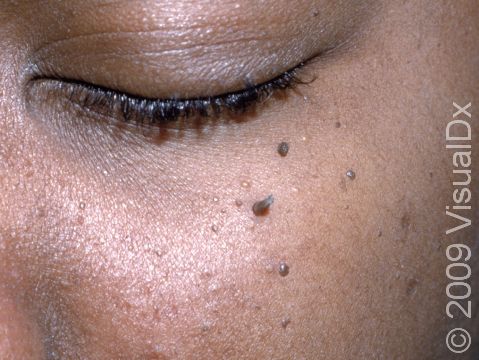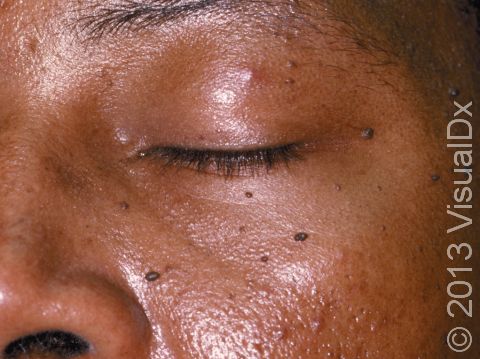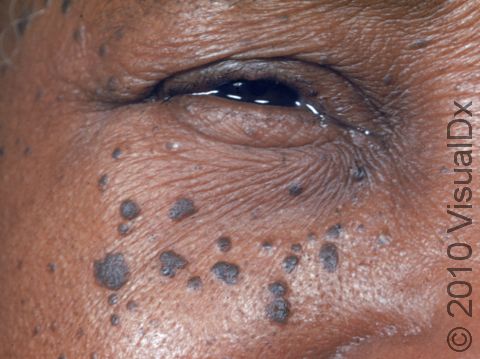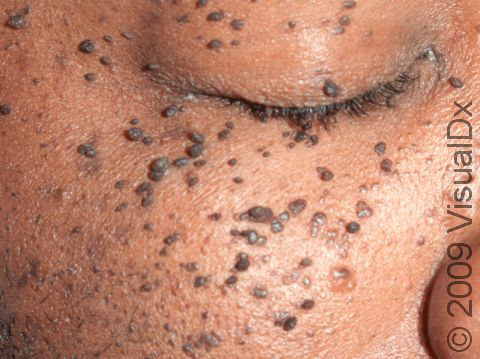Dermatosis Papulosa Nigra
Dermatosis papulosa nigra is a common condition that most often affects Black and Asian adults. The cause of dermatosis papulosa nigra is unknown, but about half of people affected have a family history of the condition.
Dermatosis papulosa nigra does not go away on its own. Although it can be cosmetically concerning, it does not pose a risk for cancer or other diseases or syndromes.
Who's At Risk?
Dermatosis papulosa nigra is most common in people with darker skin colors, especially people of African or Asian descent. Up to one-third of Black adults have at least some of these lesions. Women are affected more often than men. Dermatosis papulosa nigra usually begins in adolescence, and the number and size of lesions increase with age.
Signs & Symptoms
In dermatosis papulosa nigra, numerous papules (small, solid bumps) can be found on the cheeks and forehead. They are often dark brown or black, but they can be any shade of brown. Sometimes these papules can be found on the neck, chest, and back. They are usually symmetric (on both cheeks, for example), similar in size, and asymptomatic, meaning they should not cause any pain or itch.
Self-Care Guidelines
There are no self-care guidelines for dermatosis papulosa nigra.
Treatments
When removing dermatosis papulosa nigra lesions, your medical professional must take care to avoid scarring and loss of pigment (hypopigmentation) of the skin that can occur with certain aggressive treatments.
The most common treatment options for dermatosis papulosa nigra include snip excision (using very sharp, sterile scissors), curettage (scraping), electrodesiccation (burning), and laser removal.
Visit Urgency
No medical care is necessary for dermatosis papulosa nigra as it is a harmless condition. However, see a medical professional if you have a new dark skin growth and you are not sure what it is or if you have dermatosis papulosa nigra and would like to learn more about removal of the lesions.
Trusted Links
References
Bolognia J, Schaffer JV, Cerroni L. Dermatology. 4th ed. Philadelphia, PA: Elsevier; 2018.
James WD, Elston D, Treat JR, Rosenbach MA. Andrew’s Diseases of the Skin. 13th ed. Philadelphia, PA: Elsevier; 2019.
Kang S, Amagai M, Bruckner AL, et al. Fitzpatrick’s Dermatology. 9th ed. New York, NY: McGraw-Hill Education; 2019.
Last modified on June 17th, 2024 at 12:42 pm

Not sure what to look for?
Try our new Rash and Skin Condition Finder




